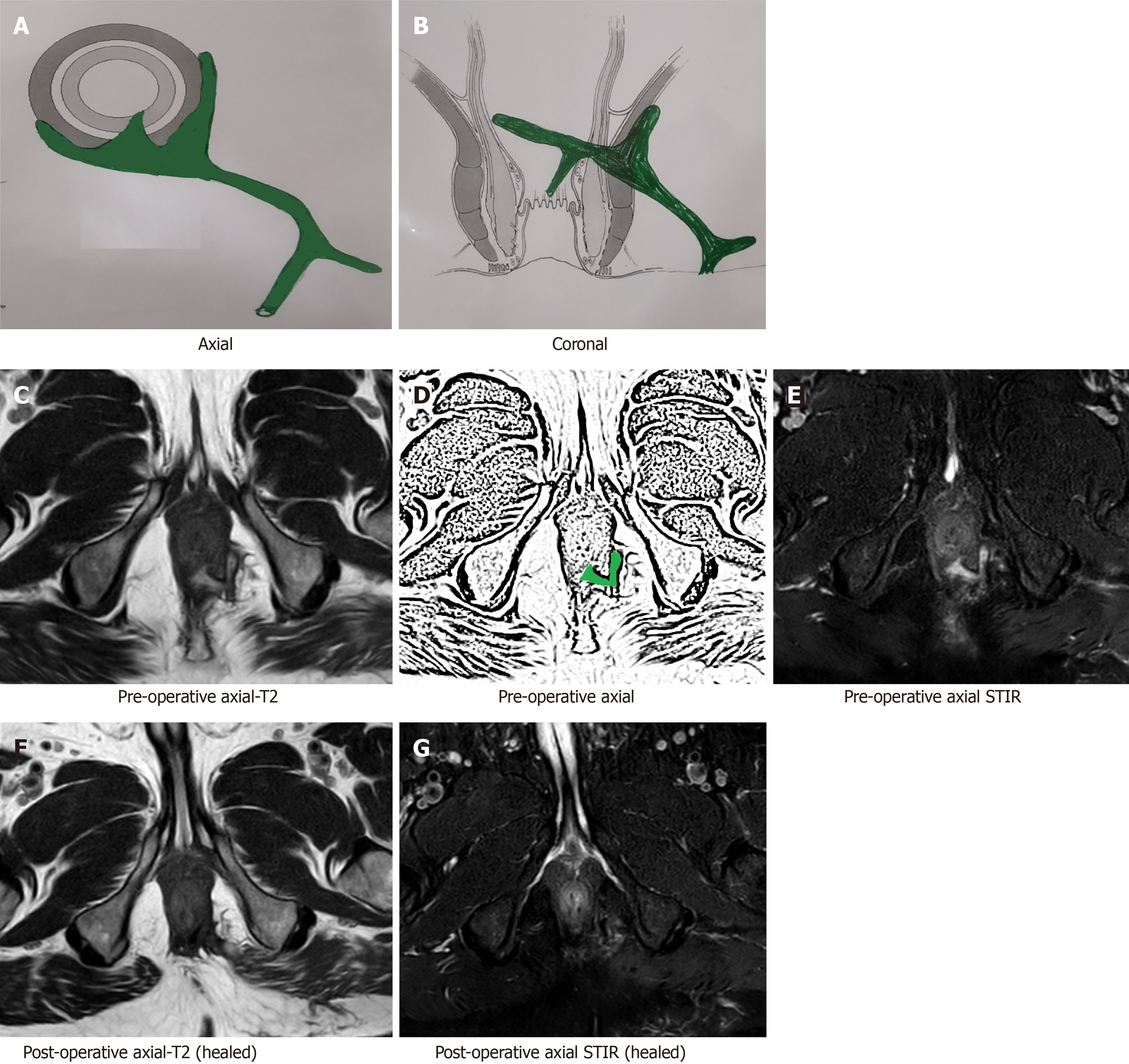Copyright
©The Author(s) 2021.
World J Gastroenterol. Sep 7, 2021; 27(33): 5460-5473
Published online Sep 7, 2021. doi: 10.3748/wjg.v27.i33.5460
Published online Sep 7, 2021. doi: 10.3748/wjg.v27.i33.5460
Figure 2 A 64-year-old male patient with a high transsphincteric fistula with multiple branches.
Magnetic resonance imaging (MRI) done after 19 wk post-surgery showing fistula has healed completely. The hyperintense signal (white) in the preoperative images has turned hypointense (black). A: Axial section (schematic diagram); B: Coronal section (schematic diagram); C: Pre-operative T2-weighted axial MRI; D: Sketch of pre-operative axial MRI image highlighting internal opening and the intersphincteric portion of fistula tract (green color); E: Pre-operative short-T1 inversion recovery (STIR) axial MRI; F: Postoperative T2-weighted axial MRI (after 19 wk) showing completely healed fistula; G: Postoperative STIR axial MRI (after 19 wk) showing completely healed fistula. STIR: Short-T1 inversion recovery.
- Citation: Garg P, Kaur B, Yagnik VD, Dawka S, Menon GR. Guidelines on postoperative magnetic resonance imaging in patients operated for cryptoglandular anal fistula: Experience from 2404 scans. World J Gastroenterol 2021; 27(33): 5460-5473
- URL: https://www.wjgnet.com/1007-9327/full/v27/i33/5460.htm
- DOI: https://dx.doi.org/10.3748/wjg.v27.i33.5460









